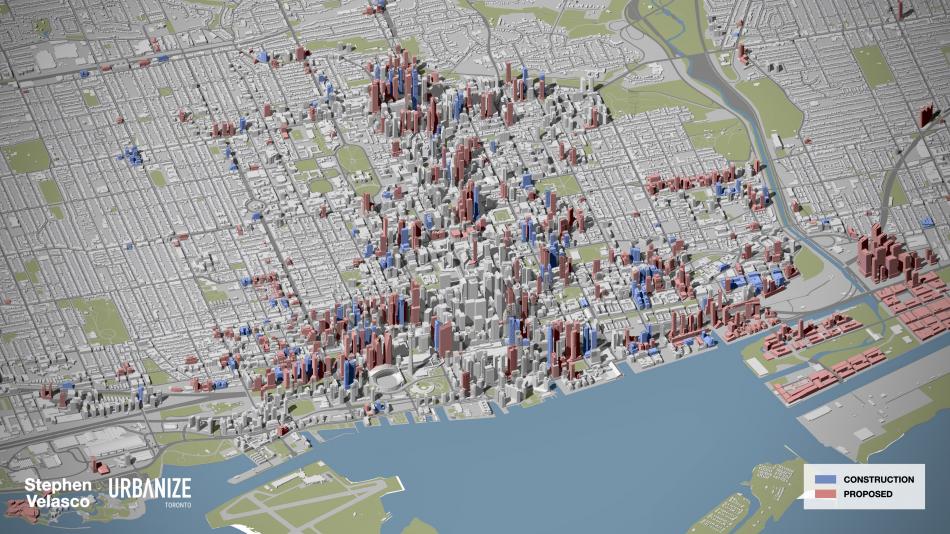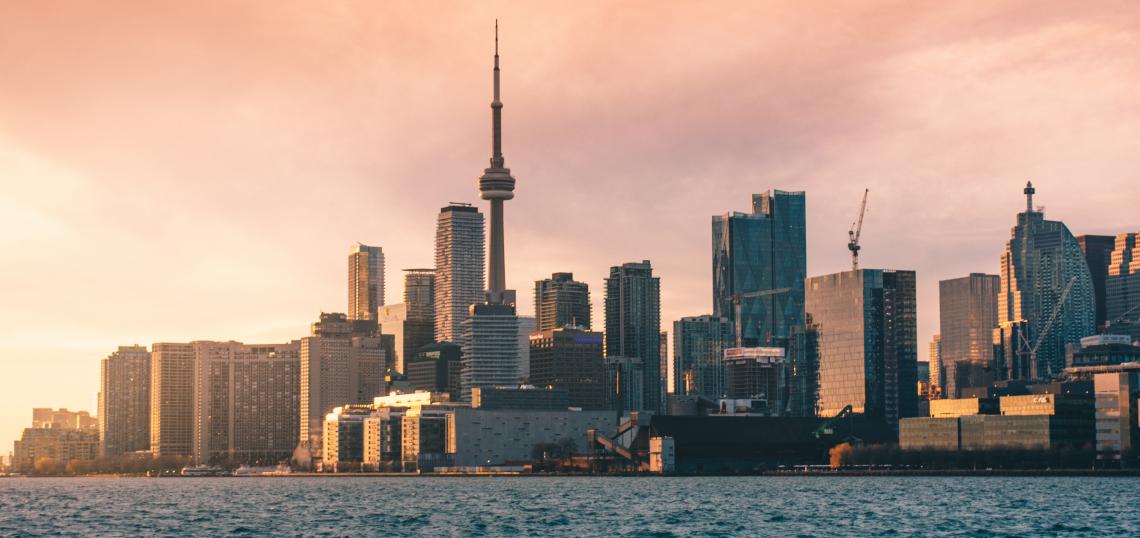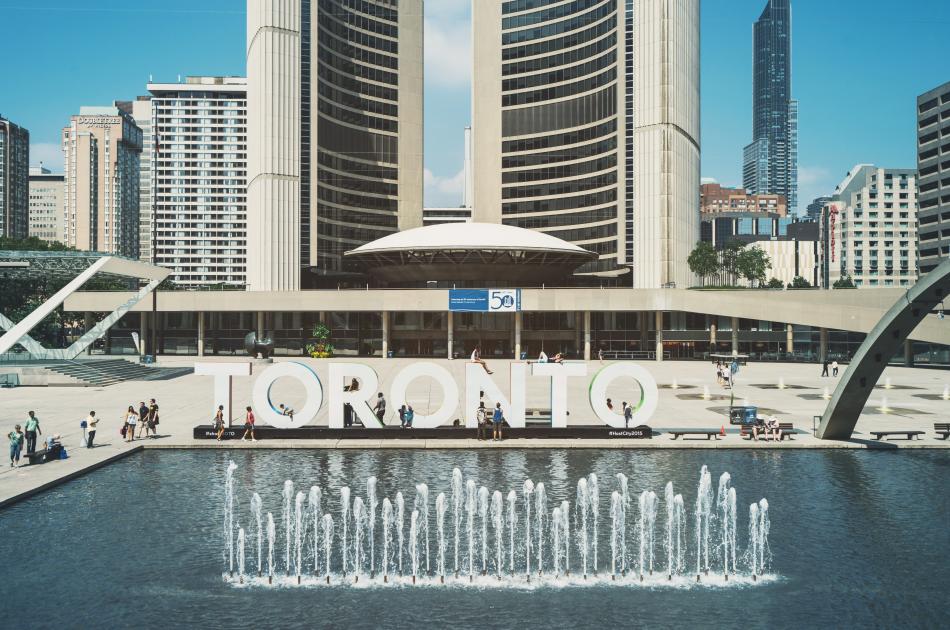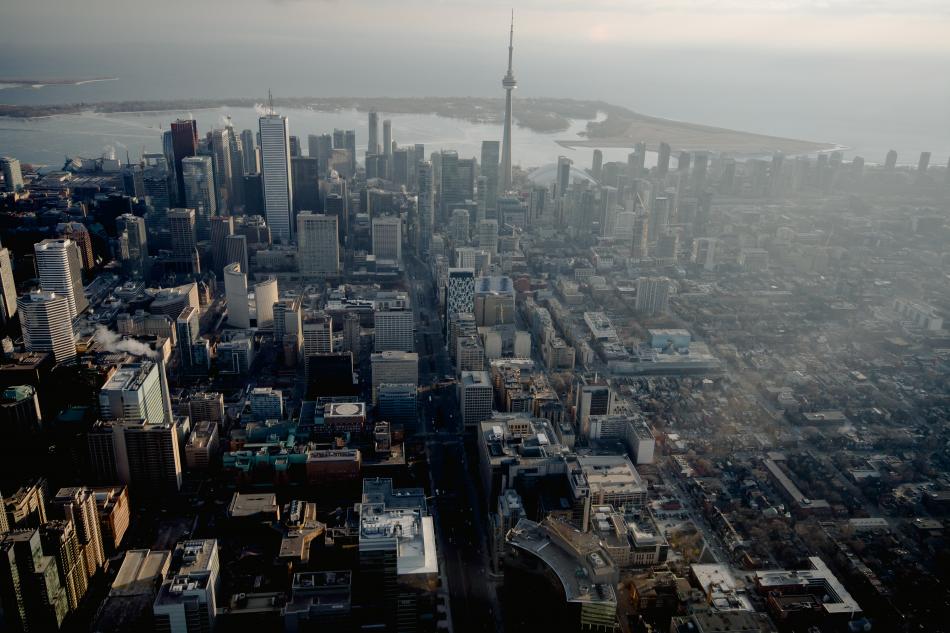For more than a decade, Toronto has been in the midst of a transformative development boom that is rapidly reshaping its urban landscape.
Since the mid-2000’s, the city has seen more high-rise development than any city in North America, repeatedly topping lists like RLB’s Crane Index, which recorded a staggering 238 construction cranes in Toronto during Q1 of 2023. There are currently more than 100 high-rises under construction and an additional 300 proposed or approved across the city. With third highest number of skyscrapers in North America, Toronto is soon expected to overtake Chicago, which currently ranks second behind New York City. The city also has a number of significant local and regional infrastructure projects underway, including North America’s largest transit expansion.
 3D model of development proposed (pink) and under construction (blue) in Downtown Toronto.Image Credit: Stephen Velasco
3D model of development proposed (pink) and under construction (blue) in Downtown Toronto.Image Credit: Stephen Velasco
Toronto is the largest city in Canada and its economic, cultural, film, and tech capital. It is also home to many of the country’s top academic institutions, hospitals and research facilities, and recognized internationally for its diverse and vibrant communities. Toronto’s thriving local economy and investment opportunities have made the city an attractive destination for businesses and new residents. With Canada’s historically high immigration targets, the city and surrounding regions have seen record population growth in recent years — with little signs of slowing down.
Increasing population, demand for housing, planning policy, economic activity and investment have all contributed to the surge in new construction, most visible in the form of high-rise condominiums. Approximately 90% of high-rise development in Toronto has been residential or mixed-use residential, and has been referred to locally as ‘The Condo Boom’.
With a limited amount of land zoned for the higher-density development needed to sustain Toronto’s growing population, development has been forced upwards, often in stark contrast to the existing low-density neighbourhoods that they co-exist in. This has resulted in several intriguing development patterns across the city that have been subject of contention amongst local residents, community members, city planners, and developers. There have also been lingering concerns over architectural integrity, quality of construction, sustainability, and affordability in what has been labelled by some as the largest real estate bubble in the world.
As impressive as the pace of new construction in Toronto is, shifting economic sentiment, rising interest rates, increasing costs of construction, land acquisition, and development charges have made headlines in recent months. A recent report from Urban Toronto recorded a decrease in development applications submitted to the City of Toronto in 2022 compared to 2021, down 7.5% to 317, compared to 405 in the previous year. The realization and long term impact of this decline remains to be seen.
Despite a potential slowdown in new construction, Toronto’s urban transformation moves forward. With an exciting number of projects already underway, the city’s development boom created a number of exciting opportunities for urban revitalization in the form of new infrastructure, master planned communities, and public spaces.
This period of immense growth marks a pivotal moment in Toronto’s history that will be documented and examined by local residents and urban enthusiasts in the years to come.
This is the first in a series of articles that will focus on three major catalysts driving Toronto’s rapid growth: Policy, Immigration, and Investment.
Stay tuned to Urbanize Toronto for the latest on development and construction in North America’s fastest growing city.








